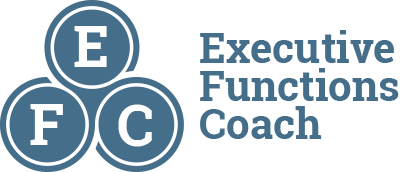A Short Story About Goal Setting Smart
Let me share a short story about goal setting smart. Sean, a former student, faced unique circumstances that hindered his executive functioning skills. Arriving in the US at the age of 8, he moved in with an uncle he had only met twice. Previously, he had lived with his grandparents as his single mother faced her own challenges. One of Sean’s long term goals for learning was to understand English enough to make new friends. He diligently dedicated himself to English learning software daily. Despite his progress, his academic grades began to decline inexplicably. After talking with his teachers, I discovered that he often failed to complete class assignments and would forget about them once home. Sean’s relentless focus on mastering English had overshadowed the importance of maintaining his grades. Recognizing this, I took the opportunity to sit down with Sean and talk to him about goal setting smart.
The Most Important Part of Goal Setting Plans
I keep two vital principles at the forefront of my mind when talking about goal setting smart. Firstly, I aimed to maintain a positive tone, emphasizing opportunities for improvement rather than dwelling on missteps. Secondly, I endeavored to establish a clear link between his newfound goals, keeping up his classwork, and his primary source of motivation: fostering new friendships. These two points are the key to any goal setting plans. Nothing surpasses the significance of aligning desired outcomes with intrinsic motivators. Often, we fixate on outcomes and the procedural steps required. We meticulously outline each stage, hoping that increased chunking and scaffolding will steer our students back on course. However, it’s not that they lack the capability to execute the tasks; rather, they fail to discern their significance. When this happens, students inevitably become overwhelmed. This underscores the importance of comprehending our student’s drivers when reestablishing goals for learning.
Okay, so how did goal setting smart go with Sean? Well, we talked a lot about the new friends he made at school. He shared with me how he was able to use the idioms he learned in his online program to create jokes like idioms are a piece of cake. I commended him, telling him that his goals for learning are really working out for him.
Then, I asked him about his grades. Sean acknowledged that he often forgets his classwork and he feels embarrassed that he is falling behind in class.
I asked him why he feels embarrassed and he said “well, I look stupid in front of my new friends.”
After pausing and giving Sean space for any further self-reflection, I responded “You know you have come a long way with your English :)” “How can we practice goal setting smart to impress your friends?”
“Well, I don’t want to be a ‘smarty pants’ and be teased.” There Sean goes with his 3rd grade lingo :)! “But I could try to finish any missing classwork, so I am less confused and look less stupid.”
“Okay Sean, let’s create some goal setting plans.”
Goal Setting Smart is All About Intrinsic Motivation
Now that Sean has a strong reason to complete is classwork at home, there is more intrinsic motivation to get it done. Creating goals for learning around internal drivers like impressing our friends or not being embarrassed in class for forgetting will leave a strong impression. It allows strategies like planners, alarms, timers, reminders, etc to work much better. These tools are no longer “annoying things my coach or mom” is telling me to do. Rather, these tools help our students work towards a goal they really want to achieve, not for us, but for them. This is the key to goal setting smart.
Make Reflection a Recurring Task in Your Goal Setting Plans
However, this doesn’t mean that our students will be perfect now. I had no expectations that Sean was going to never forget his classwork. I even reminded him that there will be times that he will forget. Creating these realistic expectations is integral in goal setting smart because the idea is to make improvements, not be paralyzed by our mistakes. What is also really important to build into any goal setting plans is to constantly reflect on the improvements and the slip-ups.
The first week or so, Sean would come to our sessions saying “Yi, I am still forgetting to do my classwork :(. What should I do?” I would always ask “Well, did you forget everyday?” Almost always, there would be one day in between our sessions when Sean didn’t forget. We would talk about what worked. At times, it was because he used his planner, his uncle reminded him, or his friends would lecture him about getting his work done. Whatever it was, we reflected on what worked and slowly built a plan that was tailored towards his success. With each reflection, Sean became more and more invested in his goals for learning.
The Common Denominator in Goal Setting Smart
Hopefully, it is pretty apparent that having a good support system is integral to any student learning how to create good goal setting plans. The support system can be a really good friend, a loving parent, a caring teacher, or an experienced executive functions coach. What is important to understand is that every individual in a support system should have very clear boundaries and expectations. Our students are young growing minds that are highly impressionable. Setting good goals for learning that they can follow through on can be very daunting. At times, it can seem impossible, especially after repeated failures. This is why having an executive functions coach that understands structures can make a world of difference.
Let’s take Sean as an example. His uncle was very busy and had little time besides taking care of his bare necessities: food, shelter, and love. This left Sean alone at home trying to figure out what to prioritize. His teachers were very helpful, but they couldn’t keep him accountable nor help him create the right structures at home. Although Sean had many great friends, it would be hard to expect 8 year olds to really help their friends with their goals for learning. This is where I came in. I was a friendly face that knew when to let him think and process and when to intervene. It also helped that we spoke the same native language. However, the most important piece was that I kept Sean from spiraling into the negative. So many students dig a hole and bury themselves in it with negative self-talk. Our time together practicing goal setting smart taught him how to always look at the positive and set the right structures for success!
Get proven goal-setting strategies from our executive function experts. Learn more and book your exclusive one-on-one session now!


